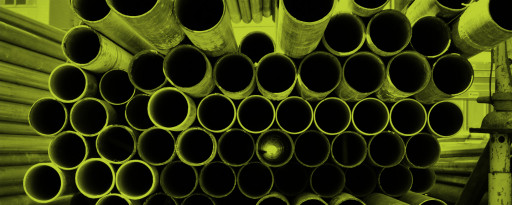Achieving H1 Energy efficiency compliance when altering an existing building
On 29 November 2021 the Ministry of Business, Innovation and Employment (MBIE) released the biggest energy efficiency updates in more than a decade.
Codewords 113: June 2023

The changes included:
- an increase to the number of climate zones from 3 to 6
- increased insulation requirements for roofs, walls, floors, windows, doors and skylights.
They also provided a new compliance pathway for heating, ventilating and air conditioning (HVAC) systems in commercial buildings.
These changes will deliver warmer, drier and healthier buildings that cost significantly less to heat and will also generate carbon savings through improved energy efficiency.
Read the updated H1 acceptable solutions and verification methods(external link) — Building Performance
The H1 Energy efficiency acceptable solutions and verification methods provide ways to comply with the Building Code, and are straightforward to use when dealing with a brand new building. However, things get a little more complicated when you want to make an alteration or addition to an existing building.
The Building Act 2004 requires all new building work to comply with the Building Code, both when a building consent is required or if the work is exempt. However, if you are carrying out building work to alter an existing building, sections 42A and 112 of the Building Act make provisions for the building to comply with the energy efficiency requirements of the building code to at least the same extent as it did immediately before the building work began. In a nutshell, the performance of the building needs to be at least as good as it was before you altered it.
So, how can you confirm that an alteration to a building will comply with the energy efficiency requirements of the Building Code?
When determining what thermal resistance is required for repaired or replaced building elements, you should consider the existing performance of the building, the extent of the element being replaced, and how the element contributes to the overall performance of the building. You can then use judgment to ensure that the replacement will perform to at least the same extent. The extent of the building envelope that is altered or replaced will influence how closely the repair/replacement should match the R-values specified for new buildings in the acceptable solutions.
Adding an extension or making a large alteration
For an addition or larger alteration to an existing building, all new construction must meet the requirements of clause H1, but the rest of the building that is not being altered does not have to be upgraded to comply with the current requirements. The altered building as a whole must comply with clause H1 to at least the same extent as it did before the alteration. In other words, all new work must comply fully with current code requirements, and the energy efficiency of the building as a whole must not be made worse by the alteration.
A simple way to achieve this is to ensure that the new construction complies with the acceptable solution or verification method, and any parts of the existing building that are affected by the alteration do not achieve lower thermal performance than they did before the alteration.
If the energy efficiency performance of the building is reduced because of the addition or extension, some existing parts of the building may need to be upgraded. However, the upgrade is not required to meet the levels set in the relevant H1 acceptable solution but should ensure that the building, as a whole, continues to achieve the level of thermal performance it enjoyed before the addition or extension. If the building was originally constructed to exceed the minimum performance levels specified in the building code, and the alteration will not lower the performance to below the code requirements then you would not need to upgrade the envelope, as it will still comply with the current requirements.
An example of this is an alteration where a new skylight is installed in an insulated roof. The R-value of the skylight is likely to be less than that of the existing roof structure that it replaces. To ensure that the overall performance of the building is not reduced, you will need to add sufficient insulation elsewhere in the thermal envelope to offset the loss in thermal resistance at the new skylight, such as installing additional roof insulation in other areas.
Smaller repairs or replacements
For repairs or replacement of a small part of the building envelope you should simply ensure the overall thermal resistance of a building is not diminished. An example of this is the replacement of an older, single glazed window or door. The replacement joinery will need to perform to at least the same extent as the one being removed but will not be required to comply fully with the current code requirements. For any work that alters an existing building, the main thing to remember is that the building's overall compliance with the energy efficiency requirements of the Building Code must not be less than it was prior to the alteration taking place.
You can find more information about how to comply with the H1 Energy efficiency requirements when altering an existing building on our website.
Read about H1 Energy efficiency for alterations and additions to an existing building(external link) — Building Performance
Don’t miss opportunities to improve building performance
Renovations and alterations oftentimes provide once-in-a-generation opportunities to significantly improve the performance of existing buildings cost effectively. Examples are retrofitting insulation to building elements that are otherwise inaccessible, or choosing high-performance double-glazing when single-glazed windows need replacing. In such situations it makes sense to go beyond what the Building Act requires.
Key dates for H1 Energy efficiency updates
On 1 May 2023 there was an increase to the insulation performance requirements for walls, floors, roofs, windows and doors in new housing. This was the next step in the staged transition for insulation requirements in housing.
The staged requirements are set out in tables within the H1 acceptable solution and verification method documents, and are summarised in a news story previously published at:
Read about the transition dates for the H1 Energy efficiency changes(external link) — Building Performance
Written by Liz AshwinSenior Advisor, Information and Education, Building Systems and Performance, MBIE
Quiz
- Under the H1 changes, how many climate zones are there in New Zealand now?
- 3
- 2
- 6
- What are the benefits of the H1 changes?
- They will deliver warmer, drier, and healthier buildings
- They will cost significantly less to heat
- They will generate carbon savings through improved energy efficiency
- All the above
- If you are asked to install a skylight into an existing insulated roof, you must:
- Not do so as the R-value will likely be less than the existing roof which could create a weak spot in the thermal envelope
- Add sufficient insulation elsewhere in the thermal envelope to offset any loss of thermal resistance at the skylight
Check answers
1. Under the H1 changes, how many climate zones are there in NZ now?
The correct answer is:
c. 6
2. What are the benefits of the H1 changes?
The correct answer is:
d. All the above
3. If you are asked to install a skylight into an existing insulated roof, you must:
The correct answer is:
b. Add sufficient insulation elsewhere in the thermal envelope to offset any loss of thermal resistance at the skylight
